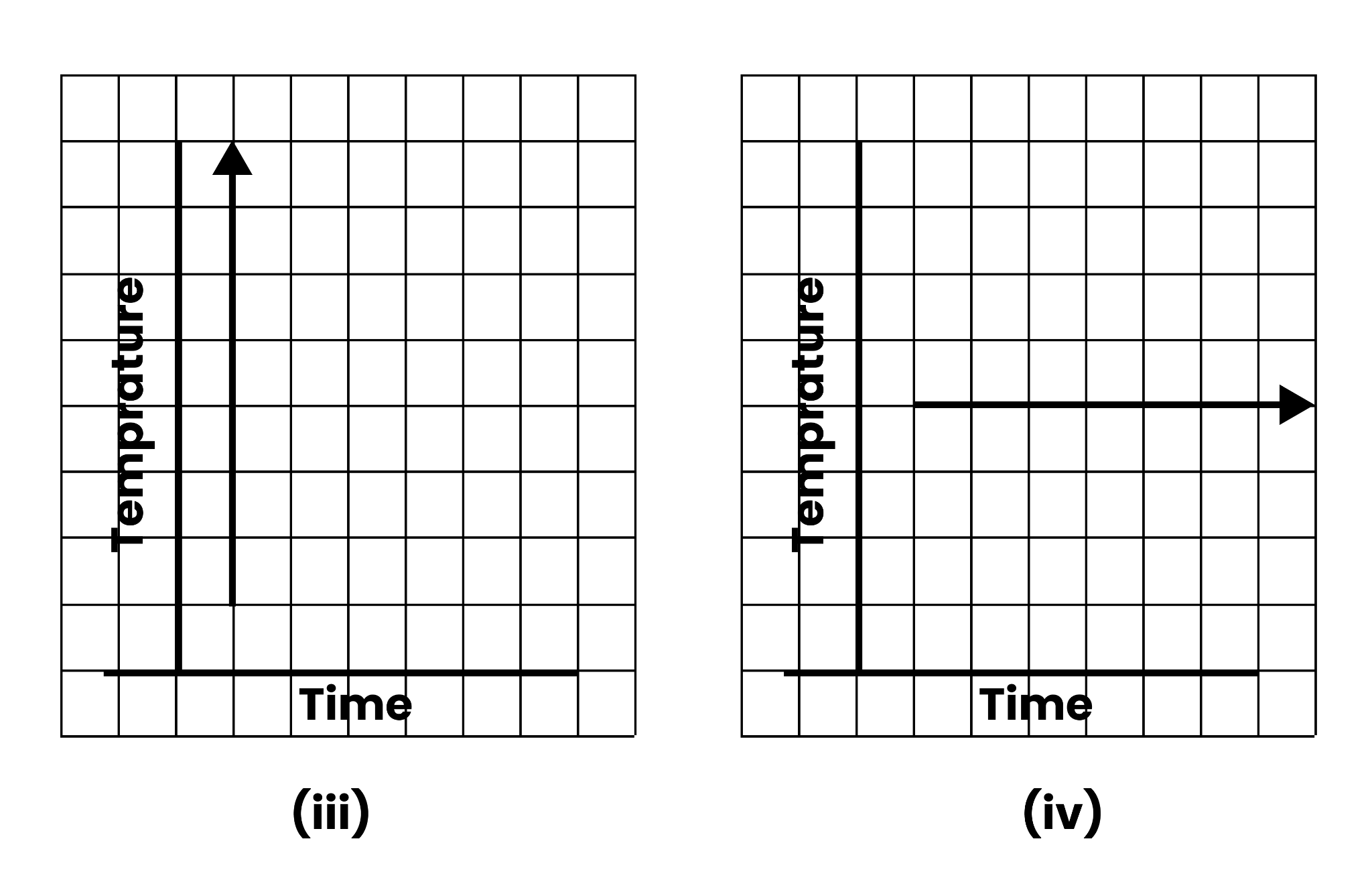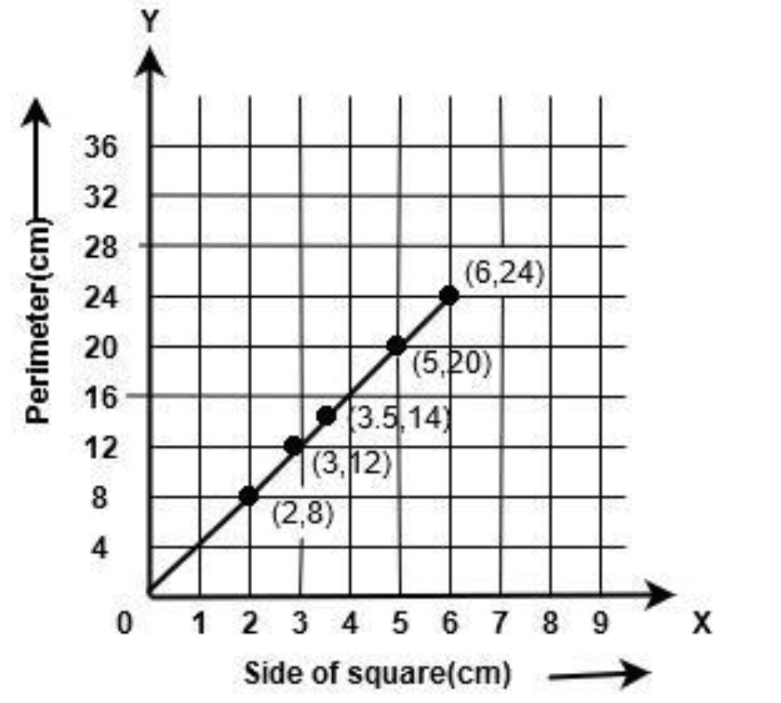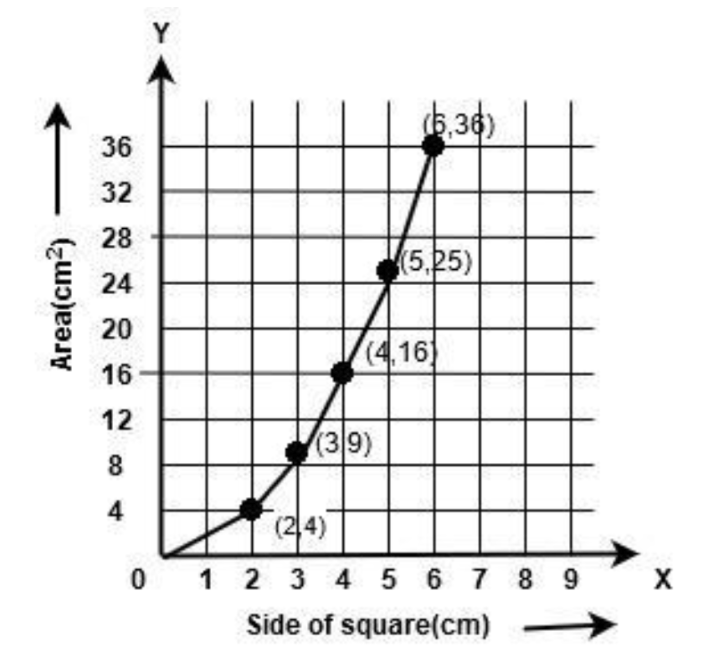Introduction To Graphs - Exercise-wise Questions and Answers For Class 8 Maths - Free PDF Download
FAQs on NCERT Solutions For Class 8 Maths Chapter 13 Introduction To Graphs - 2025-26
1. What are the main topics covered in NCERT Solutions for Class 8 Maths Chapter 13 Introduction to Graphs?
NCERT Solutions for Class 8 Maths Chapter 13 Introduction to Graphs cover the following core topics as per the CBSE 2025–26 syllabus:
- Plotting points on the Cartesian plane
- Understanding and drawing different types of graphs: line graphs, bar graphs, and histograms
- Interpreting data using graphs
- Identifying trends and patterns with graphical data
- Practical applications and reading real-life data from graphs
2. How do you plot a point on the Cartesian plane as per NCERT Solutions for Class 8 Maths Chapter 13?
To plot a point on the Cartesian plane:
- Identify the x-coordinate (horizontal axis) and the y-coordinate (vertical axis)
- Start from the origin (0,0)
- Move along the x-axis as per the x-value
- From there, move parallel to the y-axis as per the y-value
- Mark the point where these meet
3. What types of questions are solved in Exercise 13.1 of Class 8 Maths Introduction to Graphs?
Exercise 13.1 in NCERT Class 8 Maths Chapter 13 focuses on:
- Basics of the Cartesian plane
- Plotting points using given coordinates
- Recognizing the x-axis and y-axis
- Interpreting simple graphical data
4. Which graphs are introduced in Class 8 Chapter 13, and what are their uses?
Chapter 13 introduces:
- Line graphs – show how data changes over time
- Bar graphs – compare different groups or categories
- Histograms – represent data in intervals for frequency distribution
5. What are the essential elements to include when drawing a graph as per the CBSE Class 8 Maths syllabus?
According to CBSE guidelines, a correct graph must have:
- Labeled axes (with quantities and measuring units)
- Title describing the experiment or representation
- Scale marked clearly for both axes
- Grid lines and data points arranged properly
- A best-fitted line if required
- Graphs should fill the allotted space neatly
6. How can students avoid mistakes when interpreting questions on graphs in CBSE Class 8 exams?
To avoid common errors:
- Always double-check axis labels and scales
- Read the question carefully to understand what is being asked (e.g., time, value, interval)
- Locate and interpret points accurately on the graph
- Use the provided units
- Write exact values wherever required and avoid assumptions
7. What is the significance of the origin on a Cartesian plane in NCERT Solutions for Class 8 Maths Chapter 13?
The origin is the intersection point of the x-axis and y-axis, denoted by (0,0). It serves as the reference for plotting all other points, making it crucial for interpreting any graph or plotting data accurately.
8. In what ways are graphs applied in real life according to Class 8 Introduction to Graphs?
Graphs are used to:
- Track temperature and weather changes
- Represent sales, profits, or losses over time
- Display population growth or decline
- Summarize sports scores or scientific experiment data
9. How should students select an appropriate scale when drawing graphs in Class 8 Maths?
Choosing the right scale involves:
- Identifying the range of data for both axes
- Ensuring data fits comfortably within the allotted graph paper space
- Keeping scales simple and consistent for easy plotting and comparison
- Example: If values are from 0 to 40, use intervals of 5 or 10 for clarity
10. What are linear graphs and how are they different from non-linear graphs in Chapter 13?
Linear graphs are graphs that consist of points joined by a straight line, indicating a constant rate of change. Non-linear graphs will curve, showing variable rates of change. Students learn to differentiate and interpret both types as per the Class 8 CBSE syllabus.
11. Why is understanding the x-axis and y-axis fundamental for Class 8 students learning graphs?
Understanding axes is fundamental because:
- The x-axis typically represents independent variables (like time)
- The y-axis shows dependent variables (like temperature, sales, or scores)
- All plotting and reading of points depends on correct axis interpretation
12. What are the steps provided in NCERT Solutions for solving a question involving reading data from a line graph?
The standard steps are:
- Study the graph and identify axis labels and scales
- Locate the given data value on the correct axis
- Trace horizontally or vertically to intersecting points as needed
- Read the corresponding value on the other axis
- Write the answer using the correct units and values
13. How do NCERT Solutions for Class 8 Maths Chapter 13 support CBSE exam preparation?
They ensure exam-readiness by:
- Providing step-by-step, CBSE-marking scheme aligned solutions
- Emphasizing correct methodology and units
- Including all question types found in textbooks and previous exams
- Covering skipped logic, what-if variations, and reasoning behind each step
14. What is a histogram and how is it represented in the Class 8 Introduction to Graphs Chapter?
Histograms are bar-like graphs that show the frequency of data within certain intervals or ranges (frequency distribution). Unlike bar graphs, their bars touch each other. They help in understanding the spread of data over a continuous interval, a key focus in CBSE Class 8 graphs solutions.
15. How are CBSE deleted topics for Chapter 13 handled in updated NCERT Solutions?
Any topics removed from the official 2025–26 CBSE syllabus (such as Pie graphs or specific advanced sub-topics) are excluded in the latest revised solutions. Solutions now focus only on the retained parts: plotting, line graphs, bar graphs, histograms, and reading/interpreting graphs.







































